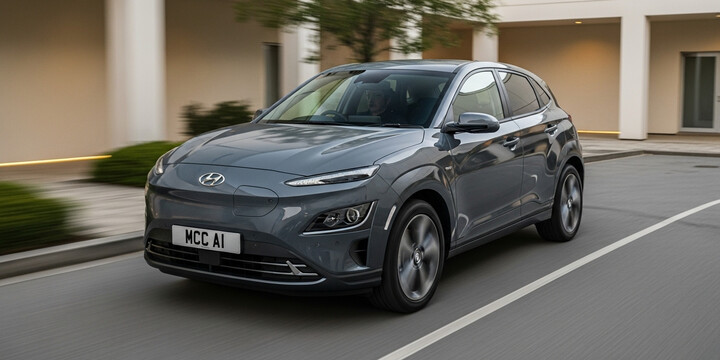
HYUNDAI KONA ELECTRIC (2023-) 5DR SUV 0.0 ELECTRIC 65.4KWH 218 N LINE S TWO TONE ROOF AUTO
The HYUNDAI KONA ELECTRIC (2023-) 5DR SUV 0.0 ELECTRIC 65.4KWH 218 N LINE S TWO TONE ROOF AUTO is a standout choice in the competitive electric vehicle market, especially suited for UK drivers seeking a versatile and environmentally friendly SUV. As part of Hyundai’s popular Kona lineup, this electric version combines the practicality of an SUV with a sleek, modern design and zero emissions. With its distinctive two-tone roof and sporty N Line S trim, it appeals to drivers looking for a stylish yet functional vehicle that’s perfect for daily commuting, family outings, or city driving.
What sets the Hyundai Kona Electric apart from its rivals is its user-friendly driving experience, impressive electric range, and well-designed interior. This model is ideal for eco-conscious families or professionals who want a reliable, low-cost-to-run vehicle that offers plenty of space and comfort. It’s also recognized for its strong build quality and advanced features, making it a compelling choice for those considering a used electric SUV. With an average private sale value around £27,470, the Hyundai Kona Electric (2023) continues to offer excellent value for drivers seeking a popular, capable, and stylish electric SUV in the UK.

average use

The data indicates that all recently recorded mileage readings for the Hyundai Kona Electric (2023 model) vehicles in the sample are within the 0 to 10,000 miles range. This suggests that these vehicles are relatively new or have low usage, which may be appealing for potential buyers seeking nearly new electric SUVs with minimal wear and tear.

vehicle values

The private sale valuation data for the Hyundai Kona Electric (2023-) indicates that the majority of vehicles fall within the £24,000 to £28,000 range, collectively representing around 42% of listings. Notably, the highest percentage (16.7%) of vehicles are priced between £26,000 and £27,000, alongside similar percentages in the £25,000 to £26,000 and £27,000 to £28,000 brackets, suggesting these are common market price points. There is a relatively small proportion (around 5.6% to 13.9%) of vehicles listed above £30,000, indicating lower prevalence of higher-priced models in private sales. The data reflects a market where the typical private sale price centers around £25,000 to £28,000, with decreasing frequency as prices move above £30,000.

production years

The data indicates that almost all Hyundai Kona Electric vehicles of this model are manufactured in 2024, accounting for 91.7%, with a small proportion (8.3%) produced in 2025. This suggests that most of these vehicles are relatively new, with the majority likely being just a year or two old, reflecting recent manufacturing activity. The presence of some 2025 models indicates ongoing production and availability for the newer model year.

colour popularity

The data indicates that the most common main paint colours for the Hyundai Kona Electric (2023 model) are Grey, Blue, and White, each representing approximately 27.8% or 19.4% of the vehicles. Interestingly, these three colours make up the majority of the fleet, suggesting a preference for neutral and classic shades among owners. Black, Red, and Silver are less common, each accounting for around 11.1%, highlighting a more subdued colour palette overall. This distribution reflects typical trends in electric vehicle styling, with a tilt towards versatile and widely accepted colours.

ownership cycle

The data indicates that the majority of Hyundai Kona Electric (2023-) vehicles, specifically 88.9%, are registered with a single keeper. A smaller proportion, 11.1%, have had two registered keepers. This suggests that most owners tend to retain their vehicle for an extended period without multiple ownership changes, which could imply good owner retention or satisfaction with the vehicle.

engine choices

The data for the Hyundai Kona Electric (2023-) indicates that all vehicles in this sample are purely electric, with no engine capacity information available. This reflects the model’s fully electric nature, which is consistent with its designation as an electric vehicle. The absence of engine capacity data underscores that electric vehicles do not have traditional engines measured by cubic capacity, and it highlights the importance of primary fuel type as a key identifier for such models.












